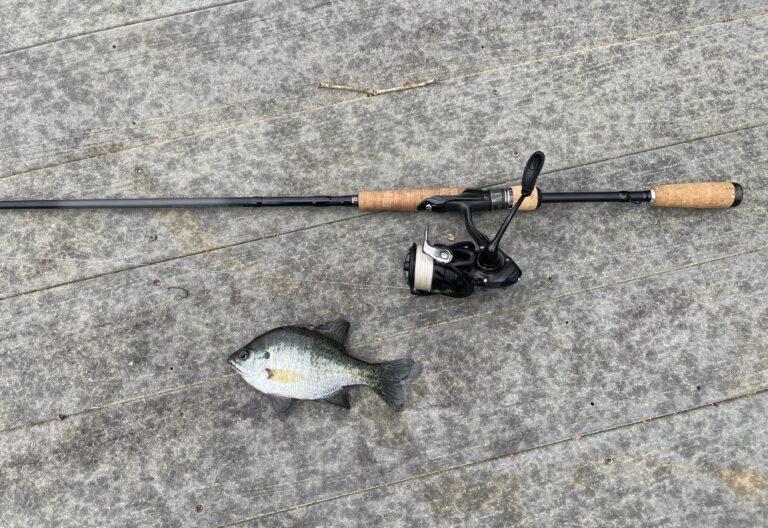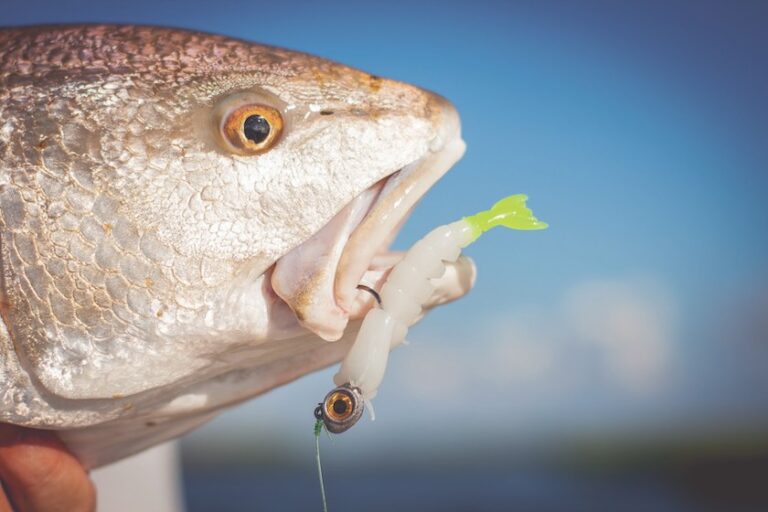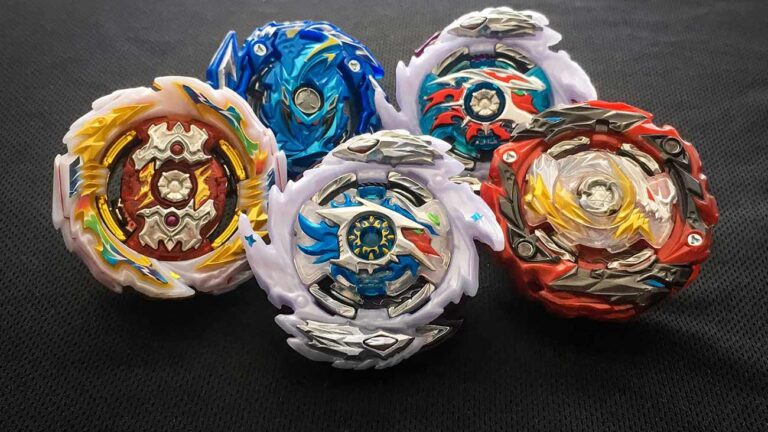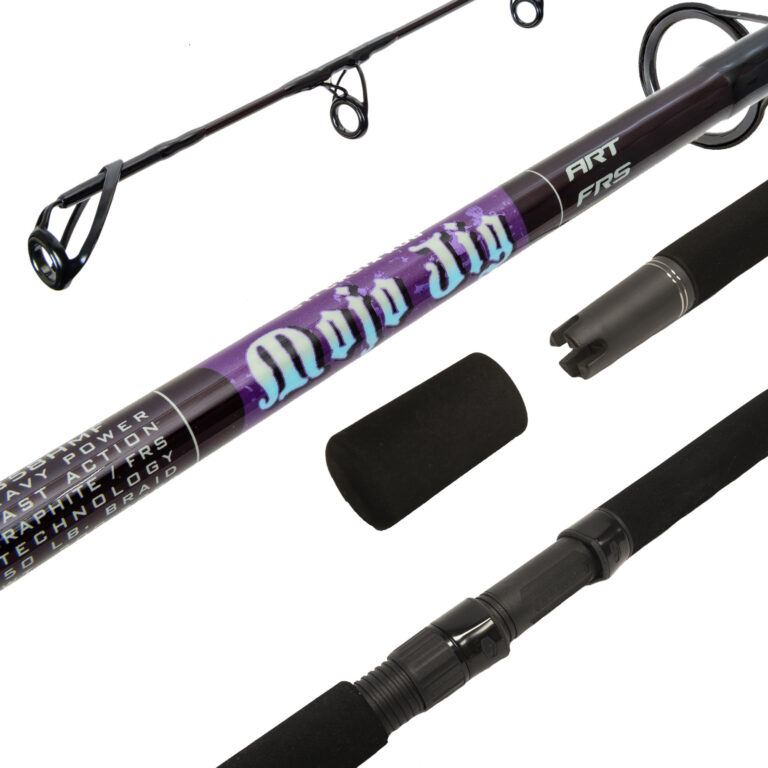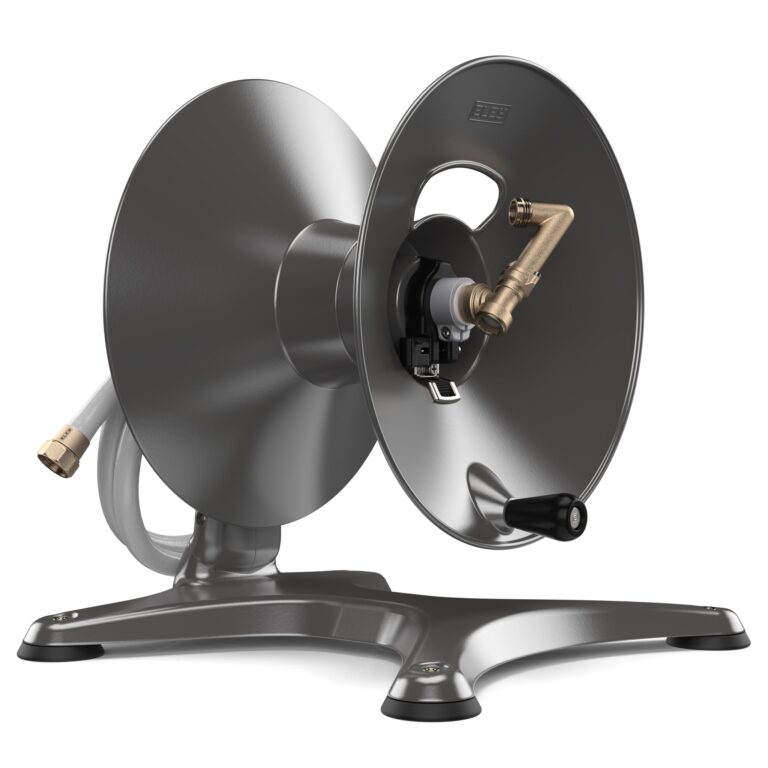Choosing the right size spinning reel involves considering the line capacity and the type of fishing you plan to do. It is important to match the reel size to the weight of the fish you intend to catch and the line weight you will be using.
Selecting the correct size spinning reel is crucial for successful fishing. The spinning reel is a vital tool that plays a significant role in casting and reeling in fish. However, with the multitude of options available on the market, it can be overwhelming to determine the appropriate size for your specific fishing needs.
This guide will provide you with essential tips and factors to consider when choosing the right size spinning reel. Understanding these key elements will help you make an informed decision, resulting in a more enjoyable and productive fishing experience. So, let’s delve into the important aspects you should take into account while selecting the perfect spinning reel size for your next angling adventure.

Credit: www.youtube.com
Benefits Of Using The Right Size Spinning Reel
Choosing the right size spinning reel is a crucial decision for any angler. It can greatly impact your fishing experience and affect your overall success on the water. In this section, we will explore the benefits of using the right size spinning reel, including enhanced casting distance and accuracy, improved line capacity and endurance, and reduced fatigue and improved comfort.
Enhanced Casting Distance And Accuracy
- With the right size spinning reel, you can achieve enhanced casting distance and accuracy, allowing you to reach those hard-to-reach spots and target specific areas with precision.
- A properly balanced reel will provide the necessary power and control, making it easier to cast your bait or lure exactly where you want it to go.
- The weight distribution and design of the reel play a vital role in achieving better casting distance, ensuring that your line flies smoothly through the air.
- By choosing the appropriate reel size, you can optimize your casting performance, maximizing your chances of landing the big catch.
Improved Line Capacity And Endurance
- The size of your spinning reel determines its line capacity, which is the amount of line it can hold. Choosing the right size reel ensures you have enough line to handle various fishing situations.
- A larger reel typically offers greater line capacity, allowing you to use heavier and longer lines when targeting larger fish species or fishing in challenging environments.
- Improved line capacity also means you can spend less time respooling and more time fishing, giving you the confidence to tackle any angling scenario.
- By selecting the correct reel size, you can ensure that your line has enough room to properly spool and reduces the risk of line tangles and knots.
Reduced Fatigue And Improved Comfort
- Using the right size spinning reel can significantly reduce fatigue and improve overall comfort during your fishing outings.
- An oversized reel can feel heavy and unbalanced, leading to arm and wrist fatigue over time. Conversely, an undersized reel may require excessive cranking and strain your muscles.
- By opting for the appropriate reel size, you can find a comfortable balance between weight and maneuverability, reducing the strain on your body and allowing for more extended periods of fishing.
- The ergonomics of a well-sized reel will also contribute to your comfort. A reel that fits your hand properly will provide a secure grip and minimize discomfort during long casting and reeling sessions.
Choosing the right size spinning reel is crucial for an enjoyable and successful fishing experience. By selecting a reel that offers enhanced casting distance and accuracy, improved line capacity and endurance, as well as reduced fatigue and improved comfort, you can optimize your angling performance and increase your chances of landing the catch of a lifetime.
Factors To Consider When Choosing A Spinning Reel Size
When it comes to choosing the right size spinning reel for your fishing needs, there are several factors to consider. Fishing technique, target species, line capacity and strength, gear ratio and retrieve speed, reel weight and balance, and build quality and durability all play a role in determining the right size spinning reel for you.
Let’s take a closer look at each of these factors.
Fishing Technique And Target Species
- Different fishing techniques require different spinning reel sizes. Consider the following:
- Light to medium-sized spinning reels are suitable for finesse techniques, such as drop shotting or finesse jigging.
- Medium-sized spinning reels are versatile and can handle a variety of fishing techniques, making them a good all-purpose choice.
- Larger spinning reels are more suitable for heavy duty fishing techniques, such as bottom fishing or trolling.
- Consider the target species as well when choosing a spinning reel size. Larger species require larger reels to handle their size and strength.
Best Spinning Reel Size For Freshwater Fishing
- For freshwater fishing, choose a spinning reel size that matches the size of your target species.
- Small to medium-sized spinning reels (1000-3000) are commonly used for small fish like trout, panfish, and bass.
- Medium to large-sized spinning reels (4000-5000) are suitable for larger freshwater species like pike, muskie, and catfish.
- Consider the weight of the reel as well, as lighter reels are more comfortable for long casting sessions.
Best Spinning Reel Size For Saltwater Fishing
- Saltwater fishing requires more robust spinning reels due to the harsh conditions and larger target species.
- Medium to large-sized spinning reels (4000-5000) are commonly used for inshore saltwater fishing.
- Larger spinning reels (6000 and above) are more suitable for offshore saltwater fishing and targeting big game species like tuna and marlin.
- Look for spinning reels with corrosion-resistant materials and sealed bearings to withstand the saltwater environment.
Line Capacity And Strength
- The line capacity and strength of the spinning reel should match the fishing line you plan to use.
- Consider the diameter and pound test rating of your fishing line and ensure the spinning reel can accommodate it.
- Spinning reels with larger line capacities are better for casting longer distances or handling thicker lines.
Matching Spinning Reel Size To Fishing Line Weight
- Match the spinning reel size to the weight of your fishing line.
- Lighter spinning reels (1000-2000) are suitable for ultra-light to light fishing lines typically used for smaller fish.
- Medium-sized spinning reels (3000-4000) are commonly paired with medium-weight lines for targeting a wide range of species.
- Larger spinning reels (5000 and above) are designed for heavy fishing lines used in saltwater or trophy freshwater fishing.
Choosing The Right Spool Capacity For Target Species
- Consider the target species when selecting the spool capacity of your spinning reel.
- Smaller spool capacities are suitable for fishing situations where long casts are not necessary and targeting smaller fish.
- Larger spool capacities are preferred for situations where longer casts and handling bigger fish are required.
Gear Ratio And Retrieve Speed
- The gear ratio of a spinning reel determines its retrieve speed.
- Higher gear ratios (e.g., 6.2: 1) provide faster retrieve speeds, which are advantageous for techniques like fast-paced lure presentations.
- Lower gear ratios (e.g., 4.5: 1) offer more power, making them suitable for techniques that require a slower retrieve.
- Consider the fishing technique and target species when choosing the gear ratio of your spinning reel.
Understanding Gear Ratios In Spinning Reels
- Gear ratio indicates the number of times the bail rotates around the spool for each turn of the reel handle.
- Higher gear ratios offer faster retrieve speeds, while lower gear ratios provide more torque.
- Different fishing techniques and conditions may call for different gear ratios to optimize productivity and control.
Determining The Optimal Retrieve Speed For Different Fishing Situations
- The optimal retrieve speed depends on factors such as the species’ feeding habits, lure presentation, and current conditions.
- Experiment with different retrieve speeds to find what attracts the fish most effectively.
- Adjust your retrieve speed based on the activity level or mood of the fish, as well as the type of lure or bait you are using.
Reel Weight And Balance
- Consider the weight and balance of the spinning reel for comfortable and fatigue-free fishing.
- Lighter spinning reels are more suitable for long casting sessions and finesse fishing techniques.
- Heavier spinning reels provide more stability and control when fighting larger fish.
- Find the right balance between comfort and durability for prolonged fishing enjoyment.
Finding The Right Balance Between Comfort And Durability
- Comfort and durability are equally important when choosing a spinning reel.
- A lightweight reel offers better comfort for long fishing trips, reducing fatigue.
- However, durability is crucial for withstanding the rigors of fishing and lasting for years to come.
- Strike a balance between these factors based on your fishing preferences and intended use.
Adjusting Reel Weight For Optimal Performance
- Adjusting the reel weight can enhance your fishing experience and optimize performance.
- Lighter spinning reels are suitable for finesse techniques and situations where casting distance is crucial.
- Heavier spinning reels provide added control and power when targeting larger species or fishing in harsh conditions.
- Experiment with different reel weights to find what works best for your fishing style.
Build Quality And Durability
- Consider the material and construction of the spinning reel for long-term durability and performance.
- Look for spinning reels made from high-quality materials like aluminum or carbon fiber for strength and lightweight.
- Ensure the reel has a solid build with quality components, as this affects its longevity and resistance to wear and tear.
- Go for spinning reels with features like corrosion resistance and sealed bearings for added durability in saltwater environments.
Remember to take into account your specific fishing needs, techniques, and target species when choosing the right size spinning reel. By considering factors like fishing technique, line capacity, gear ratio, and reel weight, you can make an informed decision and maximize your fishing success.
Happy fishing!
Steps To Determine The Right Size Spinning Reel
Choosing the right size spinning reel is crucial for a successful fishing experience. With so many options available in the market, it can be overwhelming to make the right decision. However, by following a few simple steps, you can choose the perfect size spinning reel that matches your fishing rod, target species, and fishing technique.
Let’s delve into the key factors to consider when determining the right size spinning reel.
Analyzing Fishing Rod Specifications
Before selecting a spinning reel, it’s important to analyze the specifications of your fishing rod. Pay attention to the rod power and action as these play a significant role in determining the suitable reel size.
- The power of a rod refers to its ability to withstand pressure and indicates its strength. Consider the power rating displayed on your rod, which can range from ultra-light to heavy. Remember, heavier rods require larger reels to achieve a proper balance.
- The action of a rod refers to how flexible it is along its length. It can be categorized as slow, medium, or fast. Faster action rods require smaller reels, while slower action rods require larger reels for optimal performance.
Matching Reel Size To Rod Length And Line Weight Recommendations
To ensure proper balance and functionality, it is crucial to match the reel size with the length of your fishing rod and the line weight recommendations provided by the manufacturer.
- For longer rods, such as those used for surf fishing or casting over long distances, larger spinning reels are recommended.
- Smaller reels should be paired with shorter rods used for fishing in narrow spaces or with lighter line weights.
Assessing Target Species And Fishing Technique
The type of fish you intend to catch and the fishing technique you plan to employ are significant factors when selecting a reel size.
- Larger species or those with stronger fighting capabilities may require a reel with higher line capacity and greater drag power.
- If you prefer finesse techniques, such as drop-shotting or light tackle fishing, a smaller reel with a slower gear ratio might be more suitable.
Identifying The Average Size And Weight Of Target Fish
Understanding the average size and weight of the fish you typically target will help you determine the appropriate reel size.
- For smaller fish, a smaller reel will suffice, providing you with better control and finesse during the fight.
- If you primarily target larger species, a larger reel will offer the necessary line capacity and power to handle their strength.
Understanding The Fishing Technique And Conditions
Consider the fishing technique you commonly use and the environmental conditions you fish in as these factors impact your reel size selection.
- If you often cast lures or baits over long distances, a larger reel can provide better casting performance.
- Fishing in heavy cover or areas with thick vegetation may require a smaller reel that allows for increased maneuverability.
Reviewing Reel Size Recommendations
Manufacturers often provide reel size recommendations based on the intended applications and target species. Consider these guidelines as a starting point in your selection process.
- Refer to the manufacturer’s specifications and suggestions to narrow down your options and find the right reel size for your needs.
Consulting Manufacturer Guidelines And Reel Size Charts
Another helpful resource is the manufacturer’s reel size charts, which provide specific recommendations based on various factors such as line capacity, gear ratio, and target species.
- Refer to these charts to cross-reference your rod specifications, target species, and fishing technique to make an informed decision.
Gathering Insights From Experienced Anglers And Fishing Communities
Drawing from the experiences of seasoned anglers and engaging with fishing communities can provide valuable insights when choosing a reel size.
- Interact with experienced anglers and participate in fishing forums or social media groups to gather opinions and recommendations specific to your fishing style.
Testing Reel Size Comfort And Ergonomics
Ultimately, choosing the right spinning reel also comes down to personal preference and comfort. It’s important to physically handle and test different reel sizes to ensure a comfortable and ergonomic fit.
- Grip and balance the reel in your hand to assess its weight distribution and overall comfort level.
- Check for smooth operation and handle accessibility to ensure ease of use during extended fishing sessions.
Remember, selecting the right size spinning reel is a process that requires consideration of multiple factors. By following these steps and taking into account your specific fishing style and target species, you can make an informed decision and enhance your overall fishing experience.
Happy angling!
Suggested Spinning Reel Sizes For Popular Fishing Scenarios
Fishing can be a delightful pastime, but choosing the right spinning reel size for different fishing scenarios is crucial. Whether you’re planning to go ultralight fishing for panfish and trout, freshwater bass fishing, inshore saltwater fishing, or offshore saltwater fishing, selecting the appropriate reel size can greatly enhance your fishing experience.
In this section, we will provide you with the recommended spinning reel sizes for each of these popular fishing scenarios.
Ultralight Fishing For Panfish And Trout
When it comes to ultralight fishing for panfish and trout, it is essential to have a spinning reel that is lightweight and nimble. The recommended spinning reel size for this scenario is the 1000 or 2000 series. These reels are compact and offer excellent control over your line, allowing you to make accurate casts and easily handle smaller fish.
With their smaller spools, they are ideal for lighter lines, typically ranging from 2 to 6 pounds.
Key points for ultralight fishing:
- Choose a spinning reel in the 1000 or 2000 series for its lightweight and nimble characteristics.
- Opt for lighter lines in the range of 2 to 6 pounds.
- These reels provide excellent control and are suitable for smaller fish like panfish and trout.
Freshwater Bass Fishing
If you’re planning to embark on freshwater bass fishing, you’ll need a spinning reel that can handle the power and aggression of these strong fish. The recommended spinning reel sizes for this scenario are the 2500 or 3000 series. These reels offer a good balance between power and finesse, making them suitable for larger bass and other freshwater species.
With their larger spools, they can accommodate thicker lines, typically ranging from 8 to 15 pounds.
Key points for freshwater bass fishing:
- Choose a spinning reel in the 2500 or 3000 series for a balance of power and finesse.
- Opt for thicker lines in the range of 8 to 15 pounds.
- These reels are capable of handling the strength and aggression of larger bass and other freshwater species.
Inshore Saltwater Fishing
When venturing into inshore saltwater fishing, you’ll encounter a variety of saltwater species that require a sturdy spinning reel. The recommended spinning reel sizes for this scenario are the 4000 or 5000 series. These reels are designed to withstand the harsh saltwater conditions and are built with corrosion-resistant materials.
With their larger line capacities, they can handle heavier lines, typically ranging from 15 to 30 pounds, which are necessary for battling saltwater gamefish.
Key points for inshore saltwater fishing:
- Choose a spinning reel in the 4000 or 5000 series for durability in saltwater conditions.
- Opt for heavier lines in the range of 15 to 30 pounds.
- These reels are specifically designed to handle the challenges and demands of inshore saltwater fishing.
Offshore Saltwater Fishing
For the thrill of offshore saltwater fishing, where you’ll be targeting larger and more powerful gamefish, you’ll need a spinning reel with significant strength and line capacity. The recommended spinning reel sizes for this scenario are the 6000 or 8000 series.
These reels are built to handle the intense battles with offshore species, such as tuna or marlin. With their robust construction and substantial line capacities, they can accommodate heavier lines, typically ranging from 30 to 50 pounds or more.
Key points for offshore saltwater fishing:
- Choose a spinning reel in the 6000 or 8000 series for superior strength and line capacity.
- Opt for heavyweight lines in the range of 30 to 50 pounds or more.
- These reels are specifically designed to tackle the immense power of offshore gamefish.
Now that you have the recommended spinning reel sizes for popular fishing scenarios, you can make an informed decision based on your fishing preferences and target species. Remember, finding the right size spinning reel will improve your casting accuracy, line control, and overall fishing success.
So, gear up with the appropriate reel size and get ready for an unforgettable fishing adventure!
Maintenance And Care Tips For Spinning Reels
Spinning reels are an important tool for any angler, and proper maintenance and care can significantly extend their lifespan and ensure optimal performance. Regular cleaning, lubrication, proper storage, and inspection of worn parts are all essential for keeping your spinning reel in top shape.
In this section, we will discuss some important tips on how to maintain and care for your spinning reel.
Regular Cleaning And Lubrication
To keep your spinning reel functioning smoothly, regular cleaning and lubrication are necessary. Here are some key points to keep in mind:
- Cleaning the exterior and interior components:
Regularly clean the exterior of your spinning reel with a soft cloth to remove dirt, dust, and grime. Use a toothbrush or a soft-bristled brush to clean the interior components, such as the spool, bail, and handle.
- Lubricating moving parts and bearings:
Apply a small amount of reel oil or grease to lubricate the moving parts, such as the bail arm, main gear, and handle assembly. This will prevent friction, reduce wear and tear, and ensure smooth operation.
Proper Storage And Protection
Proper storage and protection are crucial to maintaining the longevity of your spinning reel. Here are some important points to consider:
- Storing reels in cool, dry, and protected areas:
Store your spinning reels in a cool and dry area to prevent moisture damage. Avoid exposing them to extreme temperatures, humidity, or direct sunlight, as it can cause the reel to deteriorate.
- Using reel covers or cases for added protection:
Invest in reel covers or cases to protect your spinning reels from scratches, dust, and other potential damage during transportation or storage. These covers provide an extra layer of protection to keep your reels in top condition.
Inspecting And Replacing Worn Parts
Regular inspection of your spinning reel is essential to identify any signs of wear and damage. Here are some key points to keep in mind:
- Checking for signs of wear and damage:
Regularly inspect your spinning reel for any signs of wear, such as frayed lines, loose screws, or bent components. Also, check for any damage to the spool, handle, or bail arm. Promptly address any issues to prevent further damage.
- Replacing key components for optimal performance:
If you notice any worn or damaged parts during inspection, consider replacing them with genuine manufacturer-approved replacements. This will help maintain the reel’s optimal performance and prevent potential issues while fishing.
Proper maintenance and care of your spinning reel will greatly improve its longevity and ensure smooth operation on your fishing adventures. Remember to clean and lubricate the reel regularly, store it in a suitable environment, and inspect and replace any worn or damaged parts as needed.
By following these tips, you can enjoy the benefits of a well-maintained spinning reel for years to come.
Conclusion
Finding the right size spinning reel is crucial for a successful fishing experience. By considering factors such as the type of fishing, target species, and line capacity, you can ensure that you choose the appropriate reel size. Remember that a smaller reel is suitable for light tackle fishing, while a larger reel is better for heavy tackle and bigger fish.
It’s important to strike a balance between convenience and functionality, taking into account your personal preferences and fishing style. Make sure to check the gear ratio as well, as this determines the speed at which the line is retrieved. Ultimately, selecting the right size spinning reel will enhance your overall fishing performance and increase your chances of a productive and enjoyable day on the water.
So, take your time, do your research, and make an informed decision based on the unique requirements of your fishing adventures. Happy fishing!

